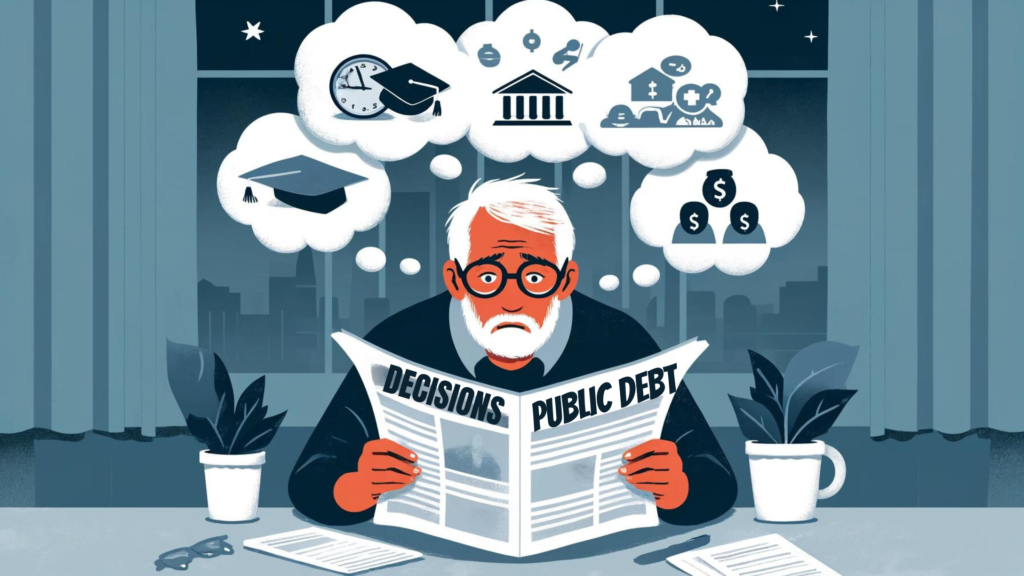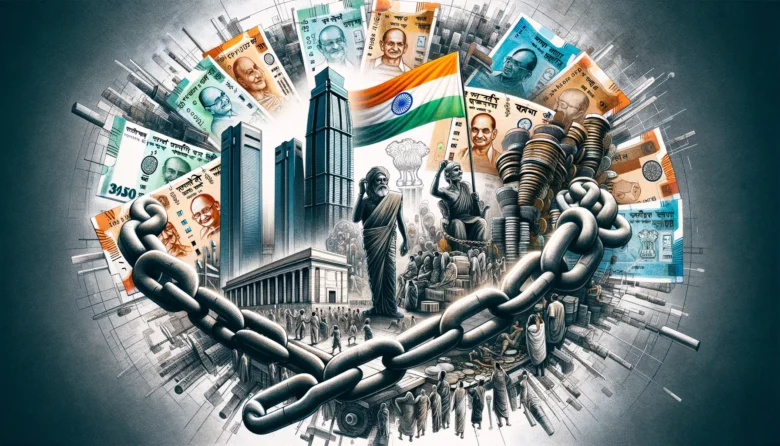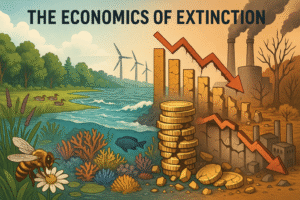Public debt, a term often mentioned in the news but seldom understood deeply, is a crucial aspect of a country’s economic framework. For India, a burgeoning economy, understanding the dynamics of public debt is not just for economists or policymakers—it’s essential knowledge for every citizen. Why should you, the common man, be concerned about the nation’s debt? This blog aims to demystify public debt and explain its effects on everyday life and the future.
Understanding Public Debt
Public debt refers to the money that the government borrows to fund its operations beyond what it collects through taxes. This can be from internal sources (within the country) or external sources (from foreign lenders). As of the latest data, India’s total public debt stands at a substantial portion of its Gross Domestic Product (GDP), indicating heavy reliance on borrowed funds.
Governments accumulate debt for various reasons such as to build infrastructure, fund education and health programs, or provide economic stimulus during downturns. Understanding this is fundamental because it directly influences the nation’s economic health and, consequently, the quality of life of its citizens.

Causes of Rising Public Debt in India
India’s public debt has been on an upward trajectory due to several reasons:
- Infrastructure Projects: Large-scale investments in roads, airports, and energy facilities require substantial capital, often financed through debt.
- Social Welfare Programs: Initiatives aimed at improving healthcare, education, and direct support to the needy increase government spending.
- Economic Stimuli: In times of economic slowdown, the government spends more to boost the economy, often resorting to borrowing.
The fiscal deficit, arising when government spending surpasses revenue (not counting borrowed funds), significantly drives up debt levels.
Effects of Public Debt on the Economy
High public debt can lead to several macroeconomic issues:
- Inflation: As the government borrows more, the increased money supply can lead to inflation, diminishing the value of money.
- Interest Rates: High debt levels can lead to higher interest rates, affecting loans for homes, cars, and other services.
- Investment: With the government absorbing a significant part of available credit, private investment can suffer, impacting overall economic growth.
Understanding these impacts helps in recognizing how governmental decisions related to debt influence the economy’s stability and growth.

Direct Impact on the Common Man
The ripple effects of public debt reach the daily lives of ordinary citizens. Here’s how:
- Taxes: To service its debt, the government may need to raise taxes, directly impacting your income.
- Public Services: Debt obligations may lead to reduced government spending on public services like healthcare and education, affecting their quality and accessibility.
- Job Opportunities: A sluggish economy burdened by high debt may result in fewer job opportunities, affecting employment rates across sectors.
These aspects show how public debt levels can dictate the economic environment that affects your financial well-being and access to public utilities.
Why Should You Care?
As voters and taxpayers, understanding and scrutinizing how our government manages debt is critical. Effective debt management can lead to sustainable economic growth and improved public services, while poor management could lead to economic instability and increased burdens on future generations.
Staying informed enables you to participate more actively in democratic processes, advocate for responsible fiscal policies, and make better personal financial decisions in a changing economic landscape.
Conclusion
Public debt is not just a number—it’s a reflection of how a nation manages its resources and responsibilities. For citizens, being aware of and understanding this concept is crucial to influencing and reacting to economic policies that impact everyone’s lives. Stay informed, ask questions, and engage in discussions about public debt, as your awareness can lead to better governance and a healthier economy.
This overview of public debt in India and its implications aims to enlighten and encourage active participation in economic discussions, making the concept not just understood, but also relevant to the daily lives of the general public.

Author’s Note
Thank you for taking the time to read this blog. I aimed to explain the concept of public debt and highlight its significance in our daily lives and the broader Indian economy. As citizens, understanding these financial concepts helps us make informed decisions both in the polling booth and in our personal finances. I hope this piece empowers you to engage more critically with economic policies and discussions.
G.C., Ecosociosphere contributor.
References and Further Reading
- “Fault Lines” by Raghuram G. Rajan – This book provides an excellent analysis of hidden fractures that can lead to economic crises, including discussions on debt.
- “India’s Economy: Performance and Challenges” edited by Shankar Acharya and Rakesh Mohan – Offers insights into various aspects of the Indian economy, including fiscal policies and public debt.





Comments
Thank you for another informative website. Where else could I get that type of information written in such an ideal way? I have a project that I am just now working on, and I have been on the look out for such information.